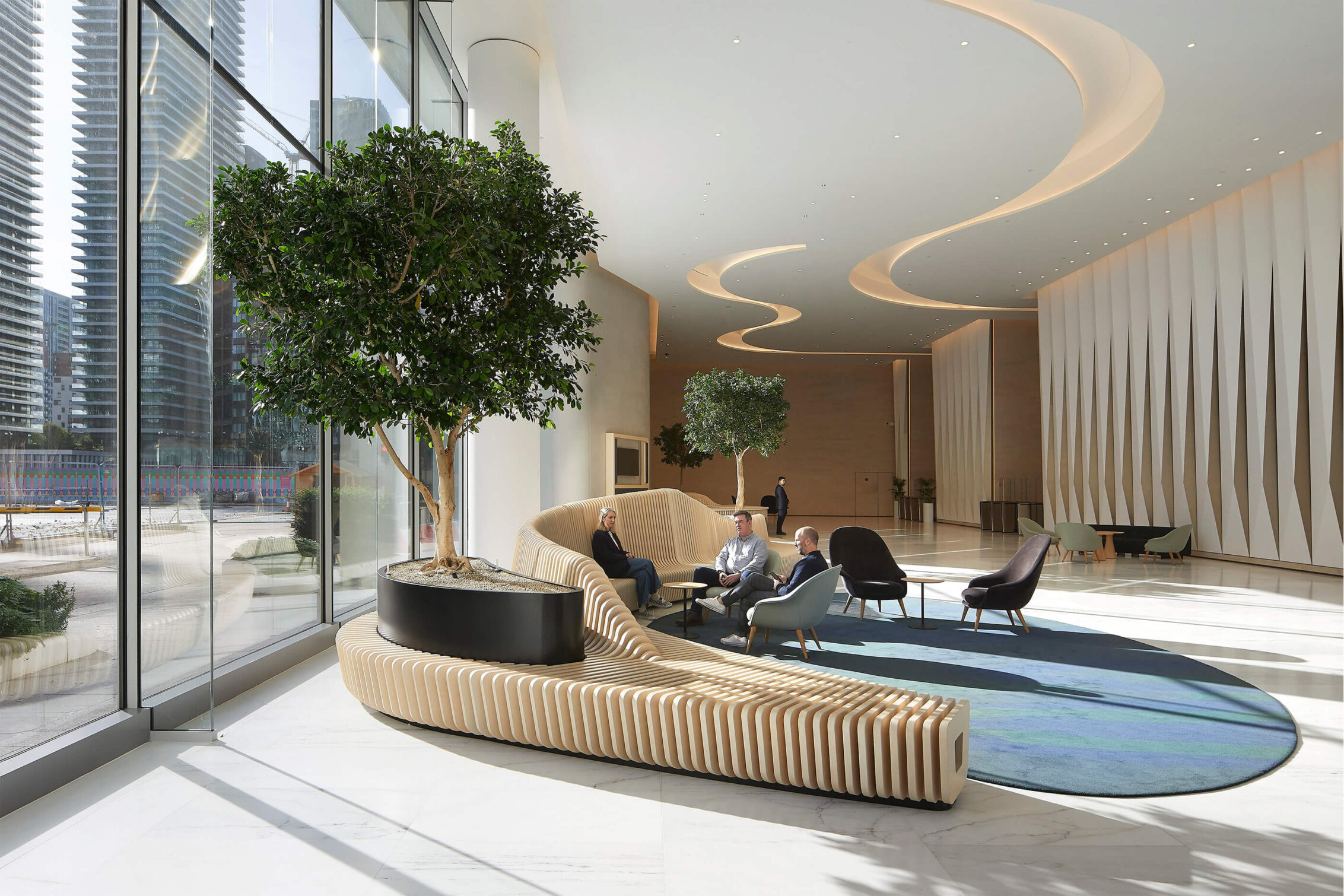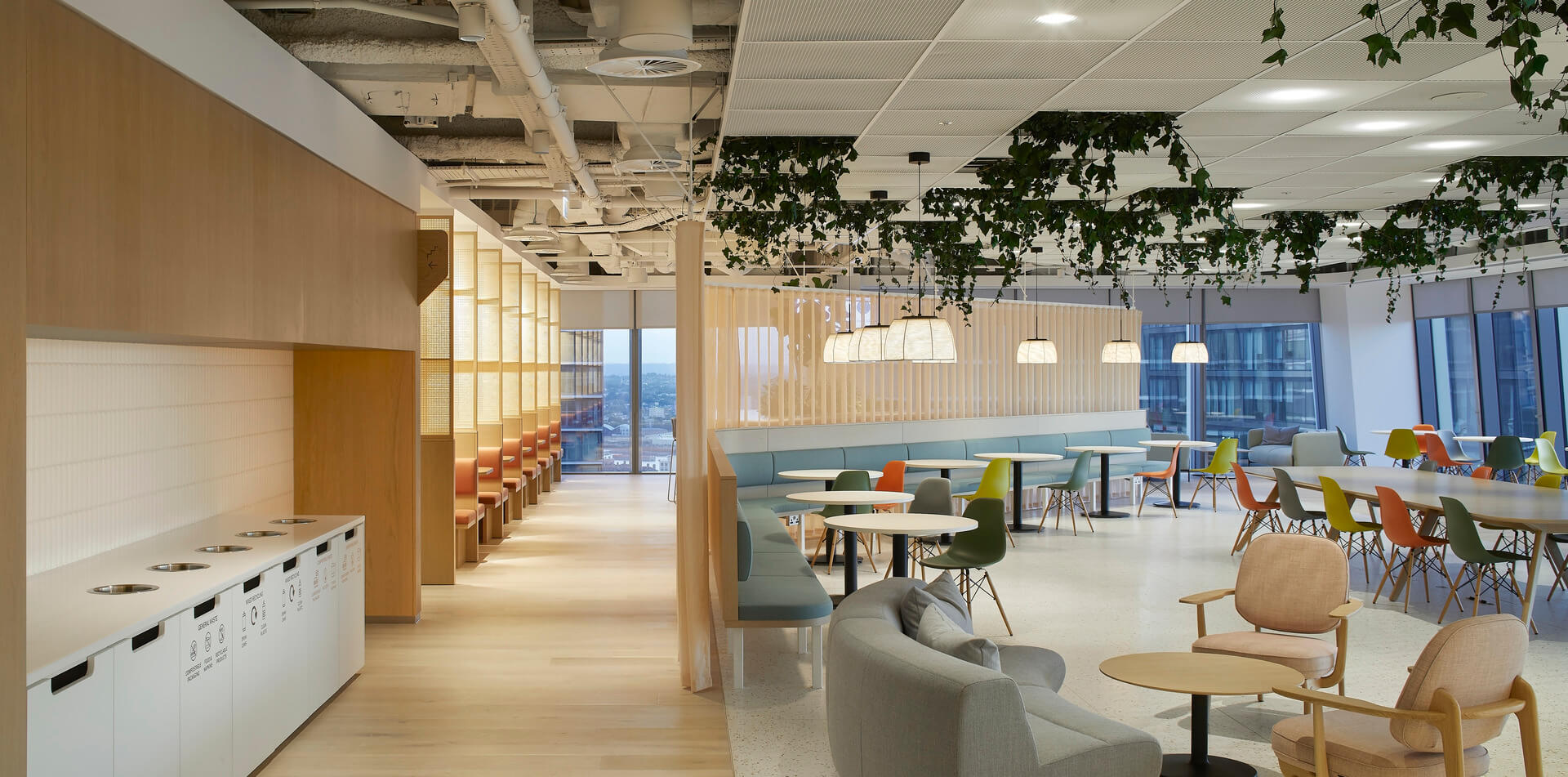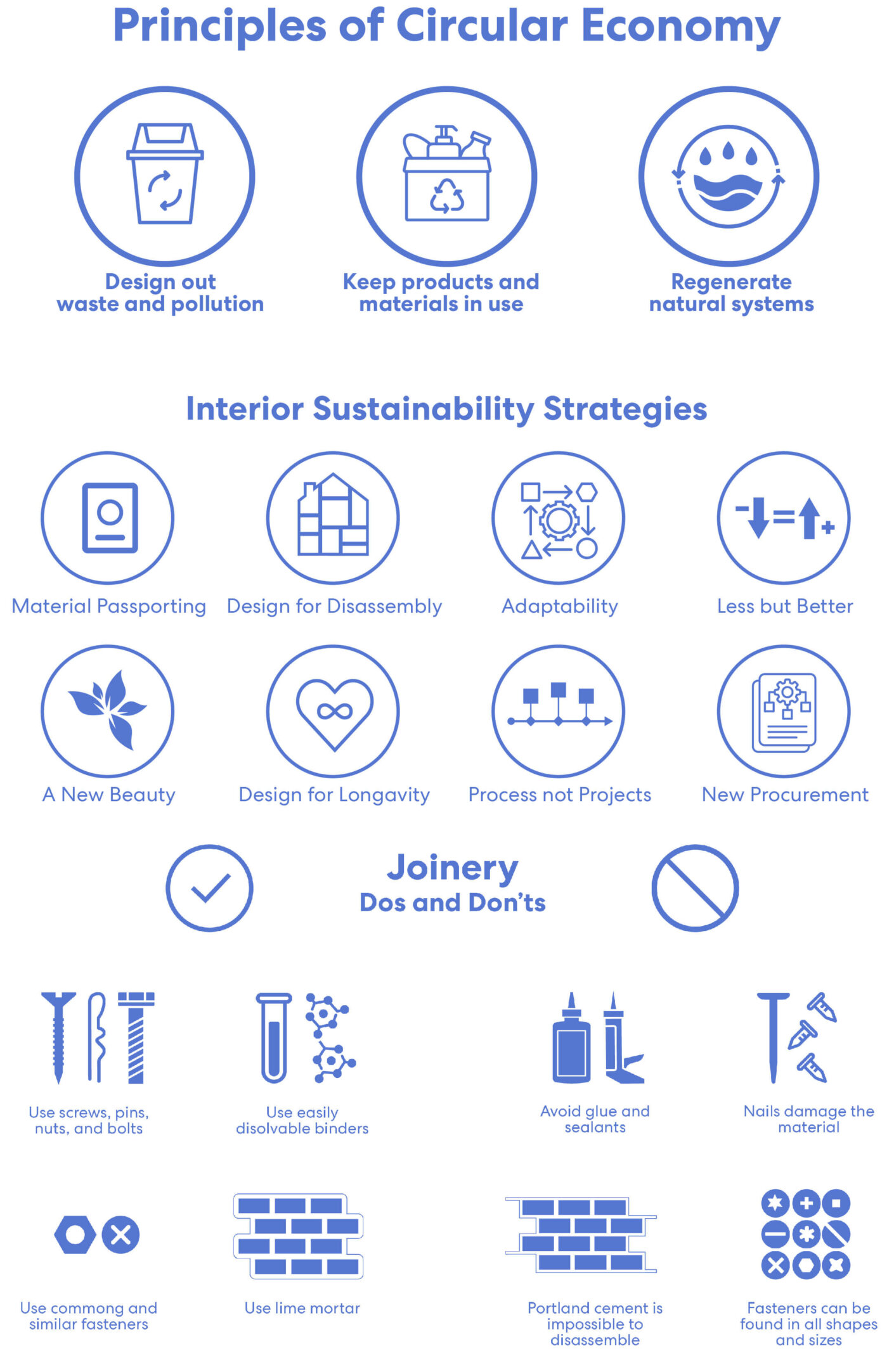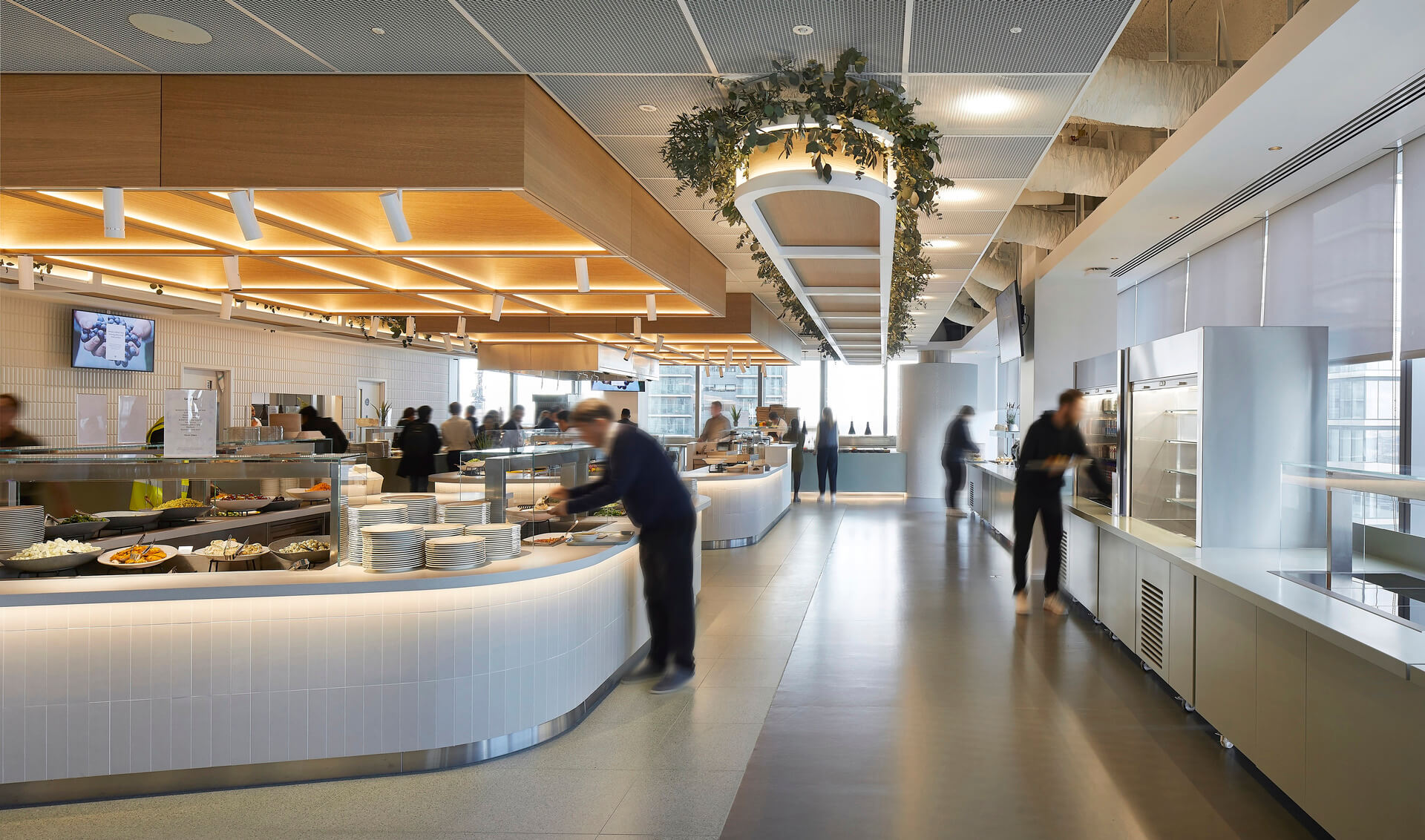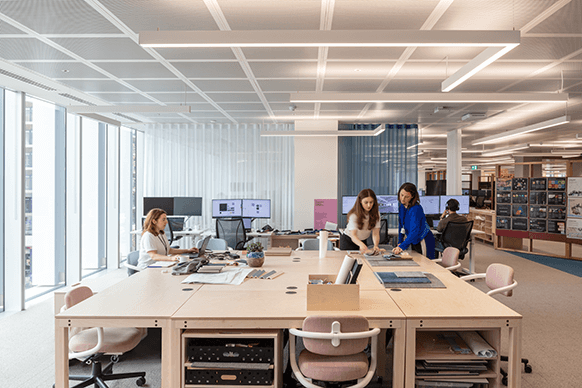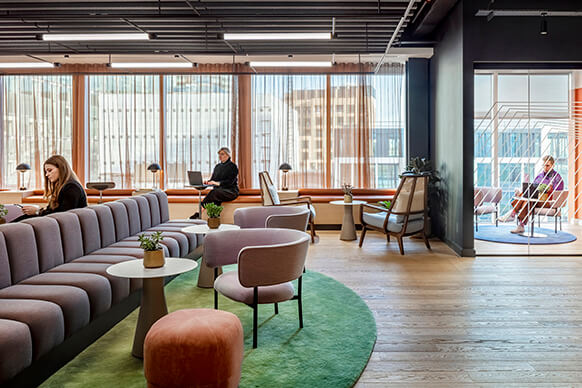When it came time to move from the building they’d called home for nearly three decades, the European Bank for Reconstruction and Development (EBRD) sought to create a new kind of workplace, one that would embrace the cutting edge of sustainability, well-being, and social responsibility. Vital to their new vision was an emphasis on resource circularity and an interior design ethos that embodied a narrative of cultural inclusion, ecological sensibility, and human flourishing.
“The core design idea is about blending nature, culture, and the client’s mission,” says Maria Papadopoulou, a senior associate and interior designer who worked on the project. “The design utilizes natural materials, biophilic patterns, and geographical references to reflect the place’s identity and the bank’s stories.”
As their new home, the EBRD would move into the top 13 floors of the recently constructed Five Bank Street tower in the Canary Wharf business district in East London. Beyond designing a contemporary workplace, Perkins&Will London and the EBRD committed to deliver a net-zero carbon fit-out, focusing largely on resource circularity. They would source rigorously selected materials and reduce emissions wherever possible. A circularity mindset resulted in the decision to design much of the fit-out for future disassembly, creating a gargantuan-scale kit-of-parts that would fit together like a three-dimensional puzzle, enabling EBRD to literally “disassemble” several components of the workplace and reuse them in other applications, recycle them, or return them back to the manufacturer.
“The project is designed and crafted to be deconstructed,” Papadopoulou continues. “We treated the office as a warehouse of high-quality materials that can be efficiently disassembled, reused, and recycled during operation and at the end of life, realizing the client’s net-zero goals.”
Designing for Disassembly (DfD) meant the design team, the contractor, and the ensemble of consultants would need to work closely with one another to reconsider long-held methods of project design and delivery.
